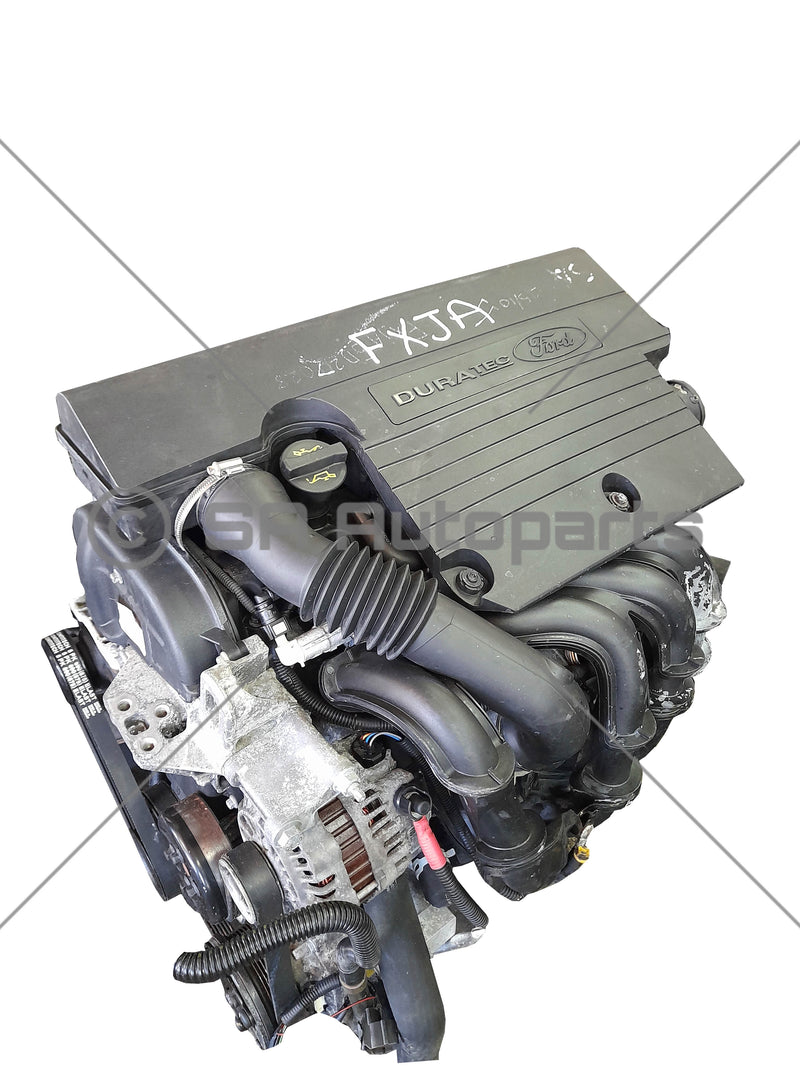Discovering the Advancement of Engines: From Timeless Layouts to Modern Marvels
From the first steam engines that powered the Industrial Transformation to the appearance of interior burning engines that transformed flexibility, each phase has actually contributed to greater effectiveness and capability. As we examine these turning points, one should consider just how the future of engine design might unfold, testing our understandings of power and effectiveness.
The Birth of Engine Technology
The introduction of engine technology marked a crucial moment in human innovation, transforming energy conversion and transportation. The earliest engines emerged from the need to harness mechanical power for practical use, leading to the development of devices that converted numerous energy forms into motion (ford fiesta engine).
The development of the internal burning engine and the development of the steam engine catalyzed an extensive change in commercial abilities. These engines not only enhanced efficiency but also expanded the scope of human mobility, enabling unprecedented transportation possibilities. The early prototypes laid the foundation for the mechanical world, assisting in the increase of markets and reshaping social frameworks.
As engine styles evolved, they progressed and integrated innovative products design concepts, paving the means for modern-day developments - ford fiesta engine. The birth of engine modern technology sparked a ruthless pursuit of effectiveness and power, establishing the phase for the vibrant evolution of transport and industrial equipment that would comply with
Steam Engines and Their Influence

The steam engine's influence was especially apparent in the transport market (ford fiesta engine). Steam-powered locomotives facilitated the rapid activity of items and individuals across large distances, properly diminishing the geographical barriers that had previously hindered trade and communication. Steamships reinvented naval travel, permitting for quicker and much more reliable crossings of rivers and seas.
In industry, steam engines powered factories, allowing mass manufacturing and the increase of city centers as hubs of economic activity. Heavy steam innovation cultivated innovations in engineering and manufacturing processes, laying the foundation for future innovations in engine layout.
The Surge of Interior Combustion
Frequently overshadowing steam power, the rise of internal burning engines noted a transformative change in transportation and industry during the late 19th and early 20th centuries. The development of these engines, characterized by their capability to burn fuel within the engine itself, enabled greater performance and power contrasted to standard heavy steam engines. Pioneering creators such as Nikolaus Otto and Rudolf Diesel played essential roles in perfecting engine designs, bring about prevalent fostering in vehicles, watercrafts, and commercial machinery.
The internal burning engine's small dimension and fairly lightweight nature facilitated the appearance of personal cars, transforming individual flexibility and improving urban landscapes. By making it possible for faster traveling and the reliable transport of products, these engines militarized financial growth and fostered globalization. The flexibility of gas choices, including gas and diesel, even more improved their allure, enabling diverse applications across numerous sectors.
Despite the environmental problems that would later on develop, the initial about his appeal of inner combustion modern technology lay in its transformative possibility. As society accepted this development, the structure was laid for modern transportation systems, developing internal burning engines as a keystone of industrial innovation and every day life throughout the 20th century.
Advancements in Engine Effectiveness
As inner combustion engines ended up being integral to transportation and market, the focus moved in the direction of boosting their effectiveness to fulfill expanding demands for efficiency and sustainability. Advancements in engine layout, material science, and modern technology have considerably added to this advancement.
One significant advancement is the growth of turbocharging, which permits boosted air consumption, causing even more full gas combustion and improved power outcome without increasing the size of engine dimension. In addition, variable shutoff timing systems have been executed to enhance why not check here engine performance throughout various RPM varieties, thus boosting gas effectiveness.
The usage of innovative fuel injection innovations, such as direct injection, has actually additionally played a vital function. This method permits more exact control over the fuel-air blend, advertising better combustion and decreasing discharges. In addition, lightweight materials, including light weight aluminum and composite components, have been adopted to decrease overall engine weight, resulting in enhanced efficiency.
These improvements reflect a broader fad within the automobile industry, where the harmony between design advancement and environmental considerations drives the recurring mission for higher performance in interior combustion engines. Consequently, contemporary engines are now a lot more powerful, cleaner, and effective than ever in the past, leading the way for a more lasting future in transportation.
The Shift to Electric Power
With expanding problems over environmental impact and nonrenewable fuel source reliance, the automotive market is experiencing a considerable change towards electrical power. This change is driven by a combination of technical developments, governing pressures, and altering customer preferences. Electric automobiles (EVs) offer an engaging alternative to traditional inner burning engines, flaunting lowered greenhouse gas discharges and reduced operating expense.
The rise of battery technology has been a video game changer, with lithium-ion batteries becoming much more effective and cost-efficient. Improved energy density and faster billing capabilities have actually made EVs extra sensible for daily use. Moreover, governments worldwide are applying incentives and setting ambitious targets for terminating nonrenewable fuel source lorries, therefore speeding up the fostering of electrical power.
As billing infrastructure expands and battery technology proceeds to boost, the shift to electric power is positioned to improve the vehicle landscape, advertising sustainability and advancement in the years to come. The future of transport is electric, and the momentum is undeniable.
Verdict
The development of engine innovation represents a substantial trajectory of technology that has actually exceptionally affected transport and industry. From the fundamental vapor engines to the transformative interior combustion engines, each development has actually added to improved mobility and financial growth.
